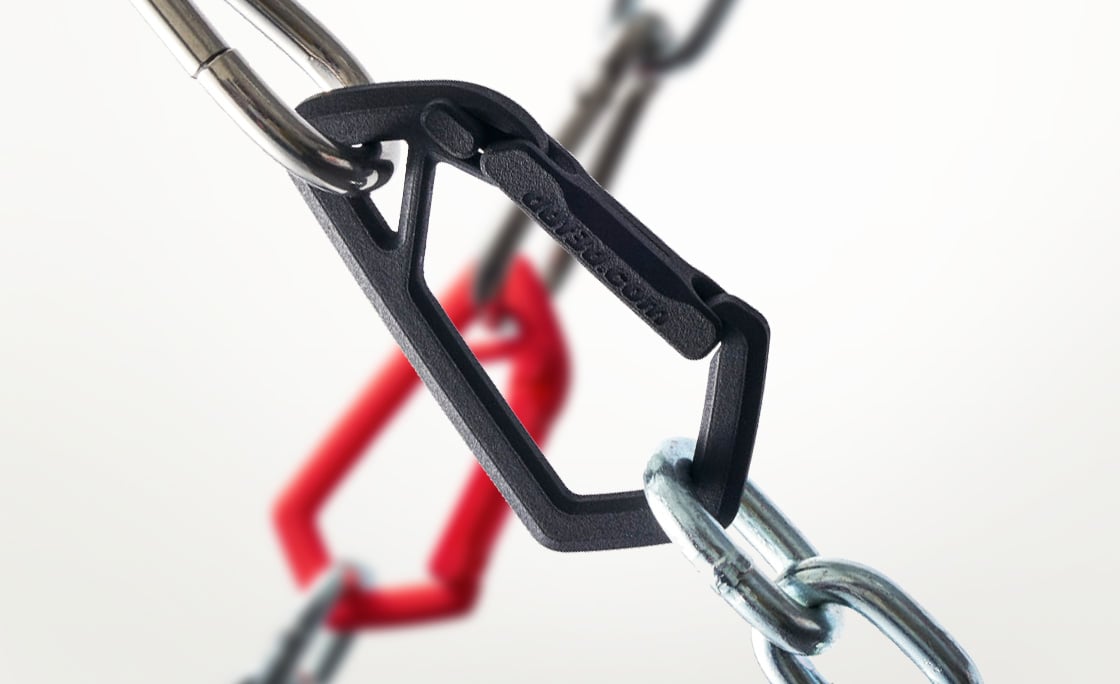
Materials like ABS and Nylon 12 [Versatile Plastic] are considered industry standards. Both are favorites of 3D printing users at all experience levels—due to familiarity and many benefits outweighing any respective drawbacks—depending on project requirements. 3D printing enthusiasts new to additive manufacturing (AM) technology and materials like ABS may be surprised, however, to find out that nylons have been used with other conventional methods since the 1930s. And they still have it, often winning out over relatively new materials like ABS, created in 1990.
ABS is widely used in FDM 3D printing
Greater accessibility and affordability of fused deposition modeling (FDM) soon resulted in widespread popularity of filaments like Acrylonitrile Butadiene Styrene (ABS), named appropriately for the three monomers making up its composition (and also sometimes acting as an unpredictable and unsteady mix). ABS is so well-known with users around the globe who have become comfortable, they might not be inclined to reach out for better alternatives—even when such choices could make the difference in winning or losing a client with a better prototype, or improving manufacturing processes with higher-quality parts.
ABS is undeniably affordable, strong, and durable enough to draw a dedicated fan club. The opaque thermoplastic is also known for its impact resistance, and heat and chemical resistance too. Along with Polylactic Acid (PLA), ABS continues on as a staple for desktop FDM 3D printing users sold on basic requirements like tensile strength and thermal stability, and undeniable durability for prototypes and functional parts; however, such loyalty means dealing with challenges like:
- Inconsistency due to the unregulated mixture of properties
- Discoloration (yellowing) after continued use
- Warping
- Shrinking
- Lack of adhesion
- Inferior layer width
To continue, ABS is still popular in the industrial settings too. Many engineers still reply on the thermoplastic material for rapid prototyping as well as end-use parts with good mechanical properties for applications like medical models, auto parts, housings and casings, and consumer items requiring durability. Not just restricted to 3D printing either, ABS is a big favorite for plastic injection due to its light weight, multiple resistance factors, and of course—affordability. It is extremely ubiquitous, and because of that many new businesses may be considering turning to ABS as a general-use material without realizing the greater benefits of other more industrial choices like Nylon 12 [Versatile Plastic].
Nylon 12 usually wins in comparison to ABS
Nylon 12 [Versatile Plastic] possesses better material properties and can produce exponentially tougher parts in terms of impact resistance. With selective laser sintering (SLS), prototyping and manufacturing of functional parts is cost-effective; and with multi jet fusion (MJF), one can expect even higher speed in production. SLS as a technology overall is advantageous for production of durable parts with complex geometries.
With Nylon 12 [Versatile Plastic] as the choice of materials in polyamide powder form, industrial users can look forward to beautifully precise parts also featuring good flexibility, critical mechanical properties, and better chemical resistance.
Nylon 12 is biocompatible & incredibly useful for medical applications
Like ABS, Nylon 12 [Versatile Plastic] is biocompatible, and more beneficial for use in creating items like 3D printed medical models and devices as there is no need for support structures. Surgical planning tools can be 3D printed, as well as a wide variety of affordable prosthetics too—leading to much-needed limb replacements and the ability to change patients’ lives enormously with the innovative trend in patient-specific treatment.
Because the un-sintered powder gathered around parts in SLS production acts a bolstering system, users are left enthusiastically unhindered. Stress centered around creating supports and then removing them in post-production is eliminated, along with the potential for causing harm to parts in the end. This is one of the most touted benefits of 3D printing with Nylon 12 [Versatile Plastic], demonstrating the awesome versatility of the material, as well as its advanced nature. Greater freedom in design is afforded, along with ability to include interlocking and moving parts. Multiple colors and premium finishes are available too.
Nylon 12 and ABS share numerous pros and cons
Both Nylon 12 and ABS have plenty in common, including the potential for blending with other plastics and composites, and opportunities for recycling and re-use in additive manufacturing processes. However, this also carries over into more negative aspects of 3D printing such as fumes—beginning with the strong and often disturbing odor associated with ABS and thought to be caused by styrene—a toxic fume that can cause headaches and other side effects if users are not working in a properly ventilated area.
Many studies have been performed in recent years regarding toxicity emanating from 3D prints with ABS or Nylon 12 [Versatile Plastic], and it would seem that they are both equally hazardous. Research has shown that microscopic particles can be inhaled into the lungs and absorbed into the skin. Safety concerns must be emphasized for users working on their own, and without question in industrial and factory settings where protective gear and comprehensive ventilation systems are necessary.
Industrial 3D printing with Shapeways
3D printing services from Shapeways such as SLS allow you to reap the rewards of high-performance, quality materials like Nylon 12 [Versatile Plastic] without having to invest all your business capital in the powerful hardware, software, and materials required for your build. Shapeways has worked with over a million customers to 3D print over 20 million parts.
Enjoy the benefits of advanced technology and wide range of materials for printing your creations with accuracy, complex detail, and no minimum or limits in terms of mass customization or single part orders. Read about case studies, find out more about our solutions, and get instant quotes.



